The dominance of themes and practices has also liberated contemporary art, extending beyond conventional art fields and reaching the boundaries of natural sciences, social sciences, mathematics, and humanities. Artists continuously explore the world around them. ‘The topics and ideas they address cannot be confined to any discipline and are not limited to art. However, cross-disciplinary art is different today because it deliberately transcends boundaries to investigate interdisciplinary topics and illuminate areas of inquiry and explain them.
The current interdisciplinary approach has some significant consequences.
First, artists take on a new role; they are chosen as outsiders and critics to view a theme and understand it through an artistic lens. Secondly, in the subjects of investigation and disciplinary practice, artists adapt methods, materials, forms, and formats from other fields and apply them in their art. Borrowing tools and practices from non-artistic fields refreshes art; it creates new hybrid methods, forms, and enhances the perception of the import and aesthetics of visual images in each discipline.
For example, Laurel Roth Hope relies on her research as a biologist when carving stuffed bird sculptures and giving them the appearance of extinct bird species. The images of these pigeons in costumes evoke memories of extinct species. Additionally, she also uses a traditional animal drawing style to portray a bird species that we still commonly encounter, the pigeon.
Lastly, artists who pursue interdisciplinary topics or research practices in various fields tend to perceive themselves and their work as more closely associated with academic fields – as researchers, theory developers, experimenters, and communicators of “discoveries” in an artistic context. This investigative and academic orientation is not limited to artists with knowledge of other fields; it also extends broadly in contemporary art. Art scientist/scholar Roger Malina calls this “research-based art.” It has a legitimate place in academia. With its academic origins and interdisciplinary scope, this art has great potential for K-12 educational methods.
Most of the artworks in this book are based on research. Two examples of art that particularly stand out are Laurel Roth Hope’s “Biodiversity Suits for Urban Pigeons: Passenger Pigeon 2” and Isabella Kirkland’s “Egg Masses of the Nudibranchs.” Both artists come to art from a background in life sciences. Research is also a motivator in art that helps address historical and social issues. Harrell Fletcher, Ibrahim Mahama, and Lisa Reihana are three examples of creative artists who create art works through rich research.
Progressive Aesthetics
However, art is not just a form of scholarship. Its aesthetic nature makes it different. In the common parlance, “aesthetics” relates to visual pleasure or beauty. Scholars of aesthetics and art have not been able to explain that simple concept; overall, they have argued that aesthetics is much more than that. First and foremost, it’s about the meaning and how a work conveys it. Furthermore, aesthetics encompasses a combination of pleasure, attachment, and experience. The aesthetic value of a work lies in its ability to attract, stimulate, and enchant people like entertainment forms.
So, what is the progressive aesthetic characteristic of art today? Contemporary art adheres to the aforementioned aesthetic principles, but it also takes aesthetic expression beyond conventions for everything, from immersive experiences, object arrangements, or using “ugly” materials to express views, conducting research and documentary work, or simply considering ordinary tasks as artworks, and more. This progressive aesthetics make contemporary art special and relevant while it presents a challenging element to us. Keep questioning: Is that art? If you want to find an answer to it, evaluate a work according to the basic principles of aesthetics: if it has meaning, has the potential to attract you personally and make you continuously feel and think, that is art.
For example: Pedro Reyes’s “People’s United Nations,” Harrell Fletcher’s “Learning about the World at the Grocery Store,” or Yunjin La-Mei Woo’s “Documentation” have attracted us through the personalization of issues and led viewers to aesthetic and intellectual experiences, despite the usual constraints. The provocative nature and aesthetics of art make it a home for the new, experiences, and sometimes even the indescribable.
Comprehensive Nature
The liberation of practicality and aesthetics makes art more pervasive in expanding artistic practices and evaluation criteria. Today’s artists, from those directly involved in painting and sculpture to those working on the periphery of art such as computer programmers, game designers, graphic designers, book illustrators,… While contemporary art embraces and revolves around these professions, it also welcomes the new.
Contemporary art has broken free from the traditional art world system of galleries and commercial museums, using new platforms to disseminate works, such as personal websites, TikTok, Facebook, and Instagram. Art originating from the street space of the 1980s and 1990s has brought art into the public domain, where it escapes established principles. Artists take control of their works and create opportunities to be recognized by the public, fostering the development of contemporary art. And it has been flourishing in recent years. Now, art has public platforms for all artists worldwide, and it is more egalitarian than ever.
Freedom from conventions and structures has also expanded the concept of “artist” and what art deserves to be expressed. Removing the rigid criteria in the West and its values has allowed today’s art world to change its modes of expression, ways of thinking, and alternative expressions. Currently, there is no specific formula for the “artist.”
This book introduces eclecticism in an art collection that includes artworks with objects and images as the centerpieces for performances and experiences. While artworks take various forms, it also addresses diverse themes from multiple perspectives and employs countless strategies. In times of upheaval like today, art becomes an important tool for processing and recording personal experiences. Making art now is a common job. Consequently, the inclusive nature of contemporary art becomes more timely and appealing than ever. It allows individuals of all ages and experiences to engage in artistic creativity, playfulness, and innovation regardless of age and experience. This art also provides inspiration for artistic practice as it shifts the focus to new ideas, playfulness, and unconventional thinking. Moreover, contemporary art allows for creating meaning with limited resources, skills, and traditional principles. A plus point for art teachers lies in how many experiments, themes, and materials used in contemporary art can be an answer to the challenges of remote learning. Nowadays, any place can become a studio, any material can be used for art, and any young person can become an artist, as any activity requires the kind of thinking, imagination, and creativity that can be demanded in art classes.
Interaction with Popular Culture
Another characteristic of contemporary art is its interaction with popular culture. Contemporary art borrows from popular culture and often uses images and forms while continuously criticizing it. Popular culture itself infiltrates art through imagination and ideas. Popular culture and contemporary art are often confused with each other. The boundary between fine art and popular culture today is nonexistent. Where there used to be a division, today we only see the void where hybrid forms are used. Old classifications such as “high art” and “low art” have been eliminated, and imagination with media has invaded the art world.
Local and Global Perspectives
Contemporary culture is one of the cultural sources and inspirations for today’s art. Fine art is often encompassed and depicted in various forms and expressions about cultural diversity. With the loosening of rules in modern Western Art, artists from non-Western backgrounds can truly pursue this artistic style, creating freedom in expressing emotions about culture, ethnicity, nationality, or even criticism of colonial regimes. This trend, along with globalization, international networks, and various art forms, promotes creativity and creates multicultural works where the pre-modern era serves as the foundation for the West. For example, in the artwork of McDonald’s packaging made of copper and shaped like a Chinese bell, Zhang Hongtu cleverly comments on the fusion and integration between East and West.
CONCLUSION
The artworks discussed in this book have been selected by the very team of artists behind it. Each exhibited piece reflects the criteria outlined in this book in terms of relevance, time, and style. Some artworks experiment with materials and techniques, while others showcase cultural diversity and geographical origins, yet most are evaluated against international standards. Above all, each piece needs to captivate the attention of aspiring artists and stimulate their senses. If you bring this artwork to a classroom and use it as teaching material, or design a course centered around it, you may experience the freshness, comfort, and inspiration it brings. Of course, if art seems perplexing to you, remember that it has its own purpose behind it, and we will explain the reasons for it in this book. Contemporary art may be challenging to fully understand, as I mentioned at the beginning of this chapter. Like a piece of jigsaw, art is difficult to grasp and often undergoes transformations.
When it comes to jigsaw puzzles, artists know how to handle them in unexpected yet meaningful ways. While a writer may perceive the jigsaw as a way to look at art, an artist sees it as an artistic material with inherent meaning and expressive potential. Liz Hickok emphasizes skills (the ability to perceive and create style) when she shapes San Francisco from colorful jigsaw pieces. It is a clever metaphor for a city with remarkable architecture but susceptible to earthquakes. The cityscape is a vivid testimony to the essence and ingenuity of contemporary art and its surprising spirit.
Julia Marshall, Connie Stewart & Anne Thulson


